How to choose a compressed air filter?
In the compressed air system, the cleanliness level is the core index to measure the quality of compressed air, which directly determines the direction of the selection of the filtration system. The international standard ISO 8573.1 classifies cleanliness by the content of solid particles, water and oil: solid particles are divided into 0-9 levels, water is 1-9 levels, oil is divided into 1-9 levels, the smaller the value of the level, the lower the content of pollutants, the higher the cleanliness.
Compressed Air Cleanliness Classes
The ISO 8573 standard consists of several parts, among which ISO 8573-1 specifies the quality classes of compressed air, which are categorized in the following aspects:
1. Solid particulate matter: Class 1-5: Classification is based on the size and quantity of particulate matter, with Class 1 being the highest and Class 5 the lowest. Example: Class 1 requires particulate matter size ≤ 0.1 μm and quantity ≤ 20,000 particles/m³.
2. Water: Classes 1-6: Classified according to dew point temperature, with Class 1 having the lowest dew point and Class 6 having the highest. Example: Class 1 requires a dew point temperature of ≤ -70°C, Class 6 requires a dew point temperature of ≤ +10°C. 3.
3. Oil: Grades 1-4: Classified according to the total oil content (including liquid oil, oil mist and oil vapor), with Grade 1 having the lowest content and Grade 4 having the highest. Example: Class 1 requires total oil content ≤ 0.01 mg/m³, Class 4 requires total oil content ≤ 5 mg/m³.
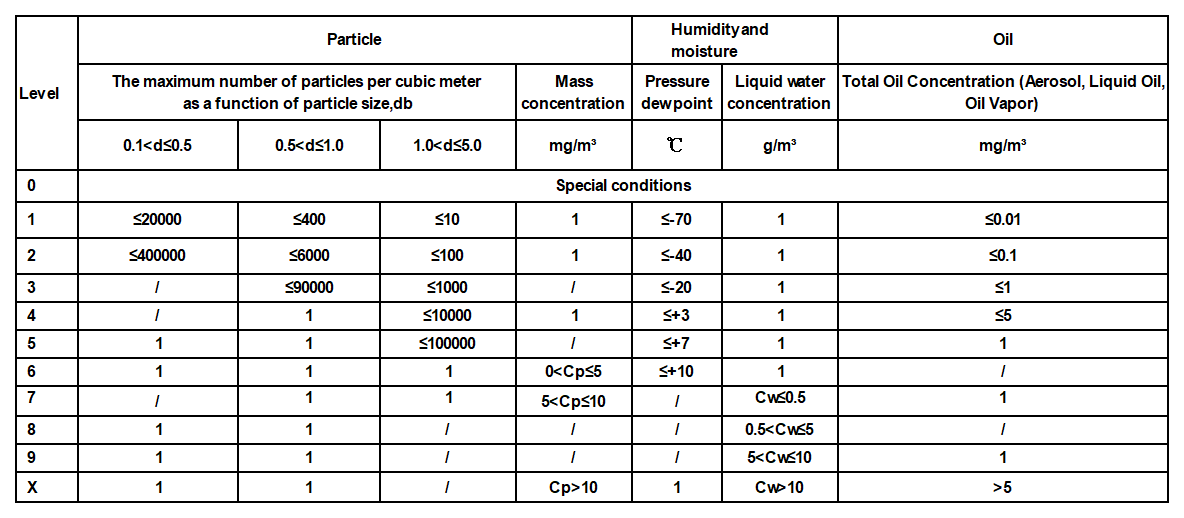
The cleanliness of compressed air varies significantly from industry to industry and process to process, and this is the primary basis for developing a filtration program. For example, semiconductor chip manufacturing is usually required to meet the ISO 8573.1 class 1-1-1 (solid particles class 1, moisture class 1, oil class 1), while ordinary air tools may only need to meet the needs of class 5-6-5. After clarifying the target cleanliness level, the filter type, precision and combination can be selected to ensure that the compressed air quality meets the actual application requirements.
Principles of Compressed Air Filter Selection
The impurities in compressed air are in various forms, including particles (e.g., particulate dust), vapors (e.g., water mist, oil mist), and solids (e.g., oil sludge), etc., and microorganisms, odors, etc., may also exist. If you don't choose the right filter according to the type of impurities and application scenario (corresponding to the cleanliness level), it will not only fail to work, but also cause losses.
Define the usage requirements: Before selecting the filter, you need to determine the usage scenario and air quality requirements. The food and pharmaceutical industries require strict removal of microorganisms, dust and oil, and have very high cleanliness requirements; general manufacturing industries have relatively low requirements. According to the specific use to determine the air quality standards, is the basis for selection.
Considering the filtration precision, the filtration precision determines the size of the impurities removed by the filter, and the common grades are from coarse to fine, such as 5μm, 1μm, 0.01μm, etc. The higher the precision, the smaller the particles will be removed. The higher the precision, the greater the ability to remove small particles, but the greater the cost and pressure loss. Selection should be based on actual needs, not the higher the better - for equipment that is not sensitive to impurities, selecting a lower precision can reduce costs and pressure loss.
Determine the type of filter: for solid dust, moisture, oil mist and odor four types of impurities, the filter is divided into four major types, each type of filtration accuracy is divided into a number of levels (such as C/T/A/F/H five levels). In practice, according to the composition and content of impurities, a single type or a combination of use to match the target cleanliness.
Focus on processing capacity: filter processing capacity needs to be matched with the compressed air flow: too small will limit the flow, affecting the efficiency; too large will increase the cost, may reduce the filtration effect. Selection should be based on the actual flow rate to choose the appropriate rated flow rate of the filter, and reserve a margin to deal with flow fluctuations.
Filters have different levels of filtration and must be operated according to the instructions provided by the equipment manufacturer, following the correct operating procedures to ensure that the filter works effectively. By correctly selecting and installing filters, we are able to ensure the quality and dryness of the compressed air, extend the life of the equipment, and improve the efficiency of the process.




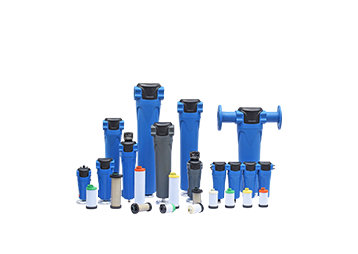
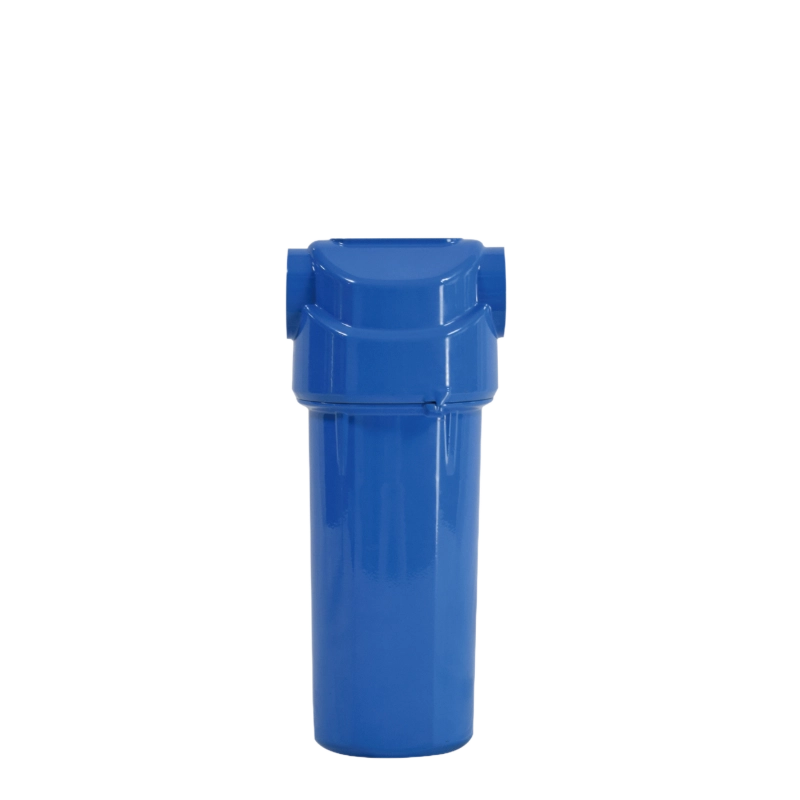

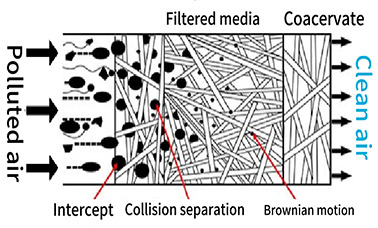
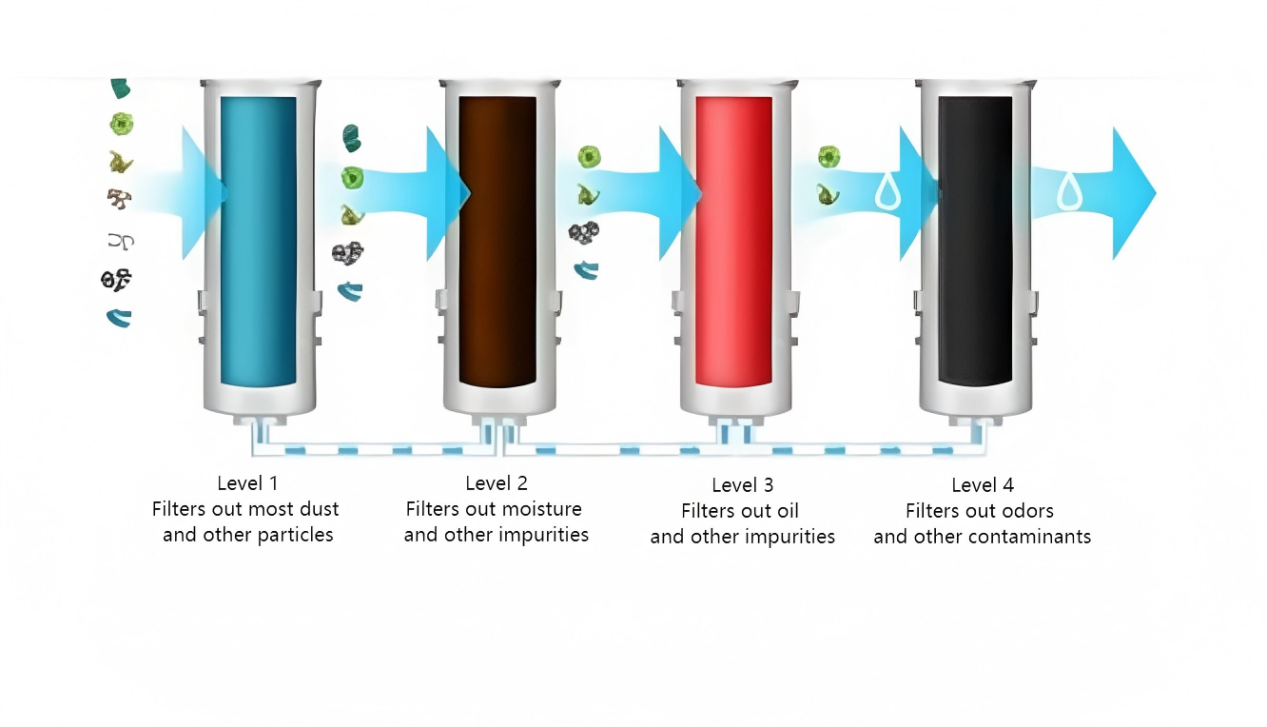
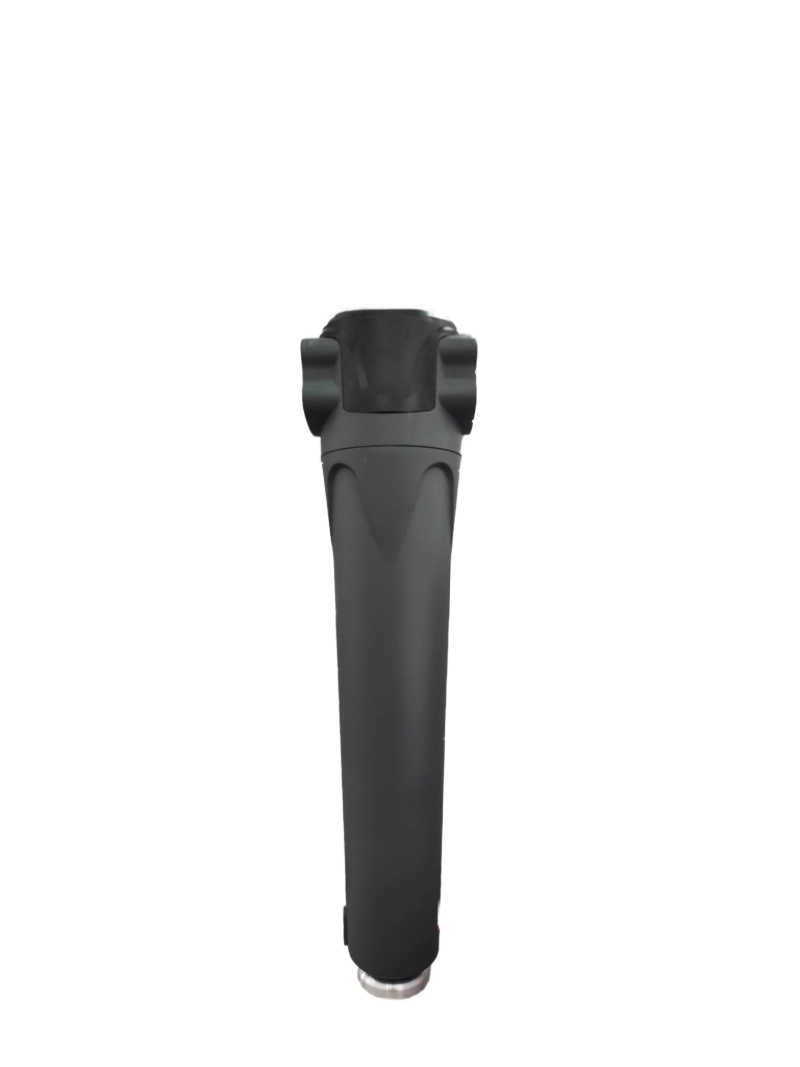
 Join us
Join us After-sale service
After-sale service News
News





